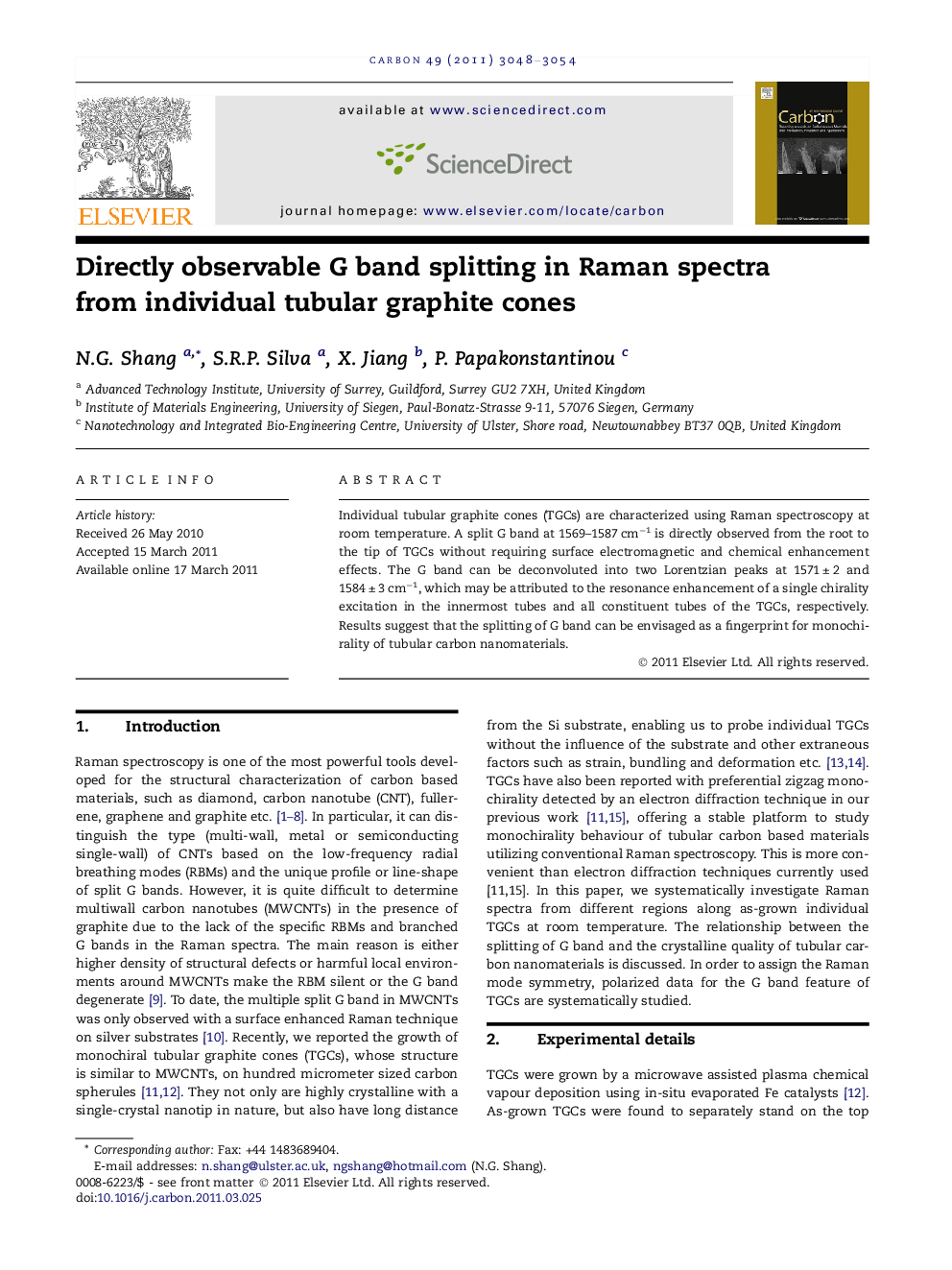| Article ID | Journal | Published Year | Pages | File Type |
|---|---|---|---|---|
| 1415394 | Carbon | 2011 | 7 Pages |
Abstract
Individual tubular graphite cones (TGCs) are characterized using Raman spectroscopy at room temperature. A split G band at 1569–1587 cm−1 is directly observed from the root to the tip of TGCs without requiring surface electromagnetic and chemical enhancement effects. The G band can be deconvoluted into two Lorentzian peaks at 1571 ± 2 and 1584 ± 3 cm−1, which may be attributed to the resonance enhancement of a single chirality excitation in the innermost tubes and all constituent tubes of the TGCs, respectively. Results suggest that the splitting of G band can be envisaged as a fingerprint for monochirality of tubular carbon nanomaterials.
Related Topics
Physical Sciences and Engineering
Energy
Energy (General)
Authors
N.G. Shang, S.R.P. Silva, X. Jiang, P. Papakonstantinou,
